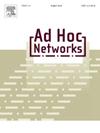无人机辅助起重作业验证中时钟偏差的检测与缓解
IF 4.4
3区 计算机科学
Q1 COMPUTER SCIENCE, INFORMATION SYSTEMS
引用次数: 0
摘要
现代信息物理系统依赖于不同的计算逻辑、通信协议和技术,容易受到环境现象和生产错误的影响,这些现象和错误会严重影响系统行为。这些系统的弹性需要在高级设计阶段考虑各种因素,以实现准确的功能预测和正确性。本文提出了一种在物理和环境条件下对时钟偏差的影响进行建模以进行验证的方法。无人机领域(UAV)背景下的验证。我们使用omnet++模拟框架以组件-端口-连接器的方式定义系统的行为。该方法利用了omnet++仿真图派生的概率决策树规则。然后用PRISM语言解释生成的基于规则的模型,以便进行自动模型验证。为了验证我们的方法,我们研究了时钟偏差如何影响无人机辅助起重作业的正确性,这是我们的主要关注点,作为代表性的应用场景。该研究检查了来自多个来源的时钟偏差,包括符合标准规范、产品制造变化、操作故障、湿度和操作温度变化。我们的研究通过模拟和模型检查探索了验证的潜力,同时也通过敏感分析研究了该方法的有效性。此外,该方法还在机器人编排和水坝基础设施的背景下进行了演示,以实现信息物理系统建模的通用化目的。该研究通过证明该方法的适用性,包括那些包含退化因素的方法,突出了该方法的有效性。本文章由计算机程序翻译,如有差异,请以英文原文为准。
Detection and Mitigation of Clock Deviation in the Verification & Validation of Drone-aided Lifting Operations
Modern Cyber–Physical systems rely on diverse computation logic, communication protocols, and technologies and are susceptible to environmental phenomena and production errors that can significantly impact system behavior. The resilience of these systems necessitates considering factors during the high-level design stages to enable accurate functional forecasting and correctness. This paper presents an approach that models clock deviation’s effects within physical and environmental conditions to perform verification & validation in the context of Unmanned Aerial Vehicle domain (UAV). We employ the OMNeT++ simulation framework to define the system’s behavior in a components–port–connectors fashion. The approach leverages Probabilistic Decision Tree rules derived from the OMNeT++ simulation chart. The resulting rule-based model is then interpreted in the PRISM language for automated model verification. To validate our approach, we investigate how clock deviations influence the correctness of drone-aided lifting operations which is our primary focus, serving as a representative application scenario. The research examines clock deviations from multiple sources, including conformance to standard specifications, product manufacturing variations, operational failures, humidity, and operating temperature changes. Our examination explores the potential of validation through simulation and model checking while also studying the approach’s effectiveness through a sensitive analysis. Furthermore, the approach is demonstrated in the context of robot orchestration and water dam infrastructure for generalization purposes in Cyber–Physical Systems modeling. The research highlights the approach’s effectiveness by demonstrating its applicability, including those that incorporate degradation factors.
求助全文
通过发布文献求助,成功后即可免费获取论文全文。
去求助
来源期刊

Ad Hoc Networks
工程技术-电信学
CiteScore
10.20
自引率
4.20%
发文量
131
审稿时长
4.8 months
期刊介绍:
The Ad Hoc Networks is an international and archival journal providing a publication vehicle for complete coverage of all topics of interest to those involved in ad hoc and sensor networking areas. The Ad Hoc Networks considers original, high quality and unpublished contributions addressing all aspects of ad hoc and sensor networks. Specific areas of interest include, but are not limited to:
Mobile and Wireless Ad Hoc Networks
Sensor Networks
Wireless Local and Personal Area Networks
Home Networks
Ad Hoc Networks of Autonomous Intelligent Systems
Novel Architectures for Ad Hoc and Sensor Networks
Self-organizing Network Architectures and Protocols
Transport Layer Protocols
Routing protocols (unicast, multicast, geocast, etc.)
Media Access Control Techniques
Error Control Schemes
Power-Aware, Low-Power and Energy-Efficient Designs
Synchronization and Scheduling Issues
Mobility Management
Mobility-Tolerant Communication Protocols
Location Tracking and Location-based Services
Resource and Information Management
Security and Fault-Tolerance Issues
Hardware and Software Platforms, Systems, and Testbeds
Experimental and Prototype Results
Quality-of-Service Issues
Cross-Layer Interactions
Scalability Issues
Performance Analysis and Simulation of Protocols.
 求助内容:
求助内容: 应助结果提醒方式:
应助结果提醒方式:


